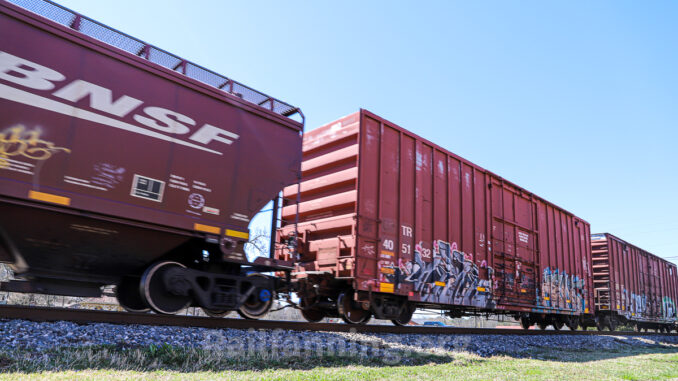
There are both costs and benefits to longer trains, but there is no clear correlation between increased train length and safety concerns.
That’s according to a new report, “Evaluating Train Length: Mitigating the Costs and Enhancing the Benefits of Longer Trains,” from the Alliance for Innovation and Infrastructure (Aii).
The report assesses train length through safety, economic costs and benefits and environmental impacts. It evaluates train length amidst a wide-ranging national debate over railroad safety and issues such as crew size and train length, which have elevated labor/corporate tensions and political debate.
As Congress considers the Railway Safety Act, numerous states consider train length restrictions and the FRA initiates an information collection action, the new Aii report aims to better equip policymakers with data in hand to implement targeted reforms that will mitigate the costs of longer trains while enhancing the benefits they can provide.
Environmentally, longer trains are more beneficial than the alternative.
The safety evaluation includes a review of Federal Railroad Administration data on train accidents, crossing incidents, and public and railroad employee casualties. The analysis could not conclude that these categories correlate with increased risks from longer trains.
Economically, the report finds that longer trains result in higher average cost per incident, while the average cost per train car decreases for train accidents as train length increases. Too little public data is available for a conclusive finding concerning blocked crossings, but the report cautions that capping train length may simply result in more trains, which could also block crossings.
Finally, environmental impacts are reduced by longer trains. Concerning hazardous material releases, the industry safety record is maintained irrespective of train length, while longer trains offer lower carbon emissions relative to the alternatives of more trains or trucks.
“Despite the popular and negative gut-level reaction to longer trains, the data helps settle certain concerns while offering a lot of angles to consider before making public policy changes,” Aii Executive Director and report author Benjamin Dierker said in a release. “There is certainly a reasonable limit to the length a freight train should be, but from accident reporting forms and public data, there is not yet a clear picture of what that length is or how it should be set – whether by a regulatory cap, industry leadership, or collective bargaining.”

